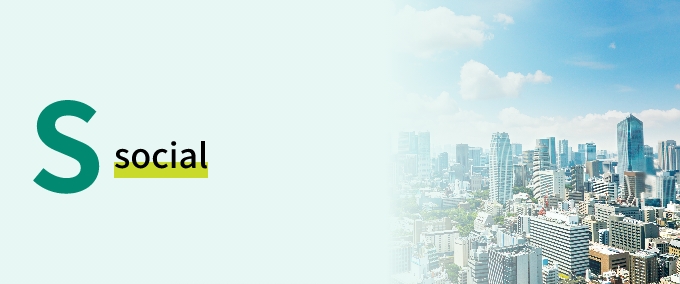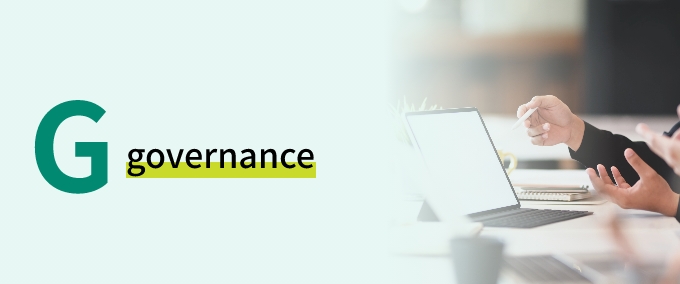
Contribute to a Sustainable
Society through Business
Basic Approach
Ushio has created a vast array of products by leveraging the technologies it has cultivated since its founding. This product creation has been strongly supported by our core technologies for controlling light, and our keen ability to perceive social issues. Going forward, we will continue to utilize our core technologies to provide solutions that resolve social issues, thereby supporting human well-being and societal growth.
Building a Framework for More Reliable Creation of New Businesses
To provide society with innovation using light, we will centralize our resources on areas where Ushio's strengths can be fully utilized and build a framework to shorten the time required to launch businesses and increase their chances of success.
Specifically, in addition to research and development functions to handle development for the purpose of creating core Ushio technology and utilizing our strengths, we will strengthen our business development functions to connect the products and services we have developed with the optimal customers and markets.
We will continue our efforts in the previous fiscal year to select themes and centralize resources even more ruthlessly, with measures including ongoing evaluation of development themes on the two axes of “research and development” and “business development” and stopping endeavors where it is difficult to utilize Ushio’s strengths.
・Strengthen the integration between the business strategies and the results of technological development to a more clearly tied to businesses.
・Strengthen the perspective of past technological know-how and utilization of assets to maximise Ushio’s strengths and utilize resource efficiently to gain expected returns.
・Promote productive processes when creating new businesses in order to explore more opportunities.
With the above three measurements, we strive to offer social value through light.
Examples of business creation to realize the creation of social value through light
Example 1. OoC
OoC (Organs on Chip): Providing a platform to speed up drug development
When drugs are developed, they are tested on animals prior to clinical trials to evaluate the effectiveness and safety, but there are still cases where side effects occur during the clinical trial and development needs to be canceled. There are also ethical issues surrounding animal testing. As an alternative, development is taking place worldwide for biomimetic systems where human cells are used to closely recreate the functions of human organs on a chip (OoC).
Ushio’s OoC technology utilizes the surface modification effect of 172nm vacuum UV light, enabling direct bonding without an adhesive agent. This enables the production of cleaner chips without chemical extractables apart from those produced by other adhesivefree bonding OoC technology, which uses agents such as solvents. Additionally, microchannels are created on the resin surface with microfabrication technology we have perfected through our development of optical components.
This OoC technology is already being used in commercially available chips for nerve cells. Neurites growing from nerve cells grow along the microchannels of the chips, allowing the neurites to form uniformly. Imaging data for the neurites can be analyzed using AI, enabling researchers to compare the characteristics with those of harmful effects of drugs that the AI has already learned and quantitatively assess the risk of harmful effects on the nerves.
We are currently working together with several major pharmaceutical companies to develop this business with the aim of creating a full-scale business. In Japan, we are involved in AMED’s*1 project for commercialization of OoC, and are currently carrying out initiatives with the aim of commercialization of OoC and promotion of its use in society.
Ushio will use this OoC technology to contribute to solutions to issues in the development of new drugs.
- * Japan Agency for Medical Research and Development


Example 2. N₂O decomposition
Technology to reduce greenhouse gas (N₂O)
The main causes of greenhouse gases are carbon dioxide (CO₂), methane (CH4), and nitrous oxide (N₂O). Ushio is working on research and development for technology to reduce N₂O, which has a particularly severe greenhouse effect.
Ushio has been working on N₂O decomposition using light from excimer lamps emitting UV light at a 172nm wavelength. However, a large amount of electricity is consumed in order to light the lamps. A large volume of CO₂ emissions occurs in the production of that electricity, making this technology a net negative for the environment. We therefore redesigned the lamps to improve their N₂O decomposition efficiency under normal temperature and pressure. This has also reduced costs to the user, as expensive materials such as catalysts are not used.
Additionally, since the source of N₂O emissions often occurs in trace concentrations, concentrating the N₂O allows fewer lamps to be used. Thus far, concentrating N₂O has been considered difficult, but through cooperation with R&D partners, Ushio has succeeded in inventing N₂O concentration technology that can achieve a high concentration. We are exploring the economic gains and costs of the system as a whole with a view to registering for N₂O emission trading.

Use in Sewers Application Research by the Ministry of Land, Infrastructure, Transport and Tourism
We are now in the second year of research with the aim of implementing this technology in sewage systems. From 2023, our work on N₂O decomposition is being used in Sewers Application Research by the Ministry of Land, Infrastructure, Transport and Tourism, and has received a positive response. Going forward, we will carry out research and business development with the aim of scaling up and an eventual view to implementation in various areas of society, including sewage systems.
Ushio will use its technology to contribute to halting global warming with the aim of achieving a world where a global carbon net zero and the wellbeing of people are in harmony with each other.
Example 3. Interference lithography
Ultrahigh-precision lithography equipment to support the light systems of the future
XR systems have become a focus as the new smartphones, and the world is looking to optoelectronic fusion devices as volumes of information increase. To create the light systems required for the development and popularization of these technologies, high-performance light sources and optical components with fine precision structures are essential. Ushio is developing ultrahigh-precision lithography equipment to meet these needs.
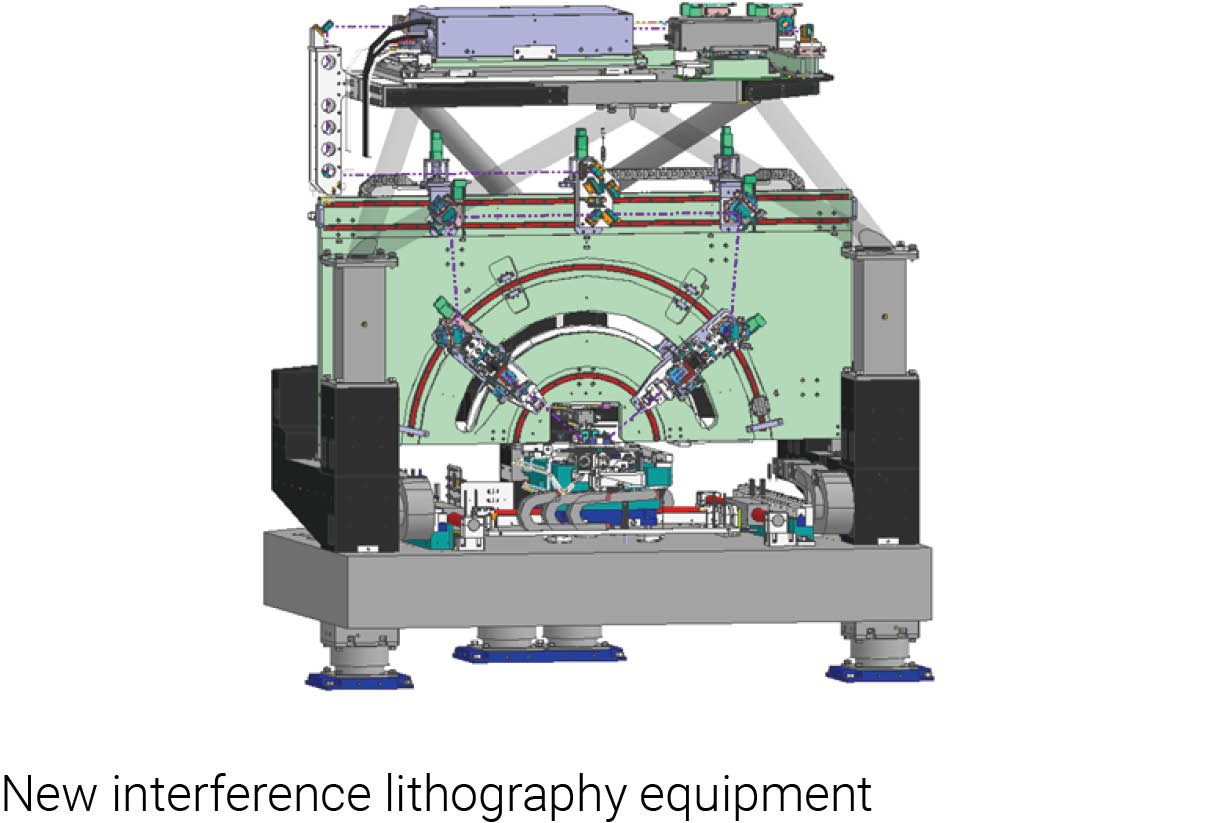
Seamless patterning on all surfaces regardless of contours
Ushio is proposing completely new interference lithography equipment. Building on the extensive lithography equipment we have developed for semiconductor production, we are introducing innovative interference lithography technology to propose lithography solutions that are unaffected by environmental conditions and vibration and are highly automated for superior performance in mass production.
The equipment has two optical path arms that move in circular arcs and a high-precision wafer stage with a resolution of 2nm on the lithography surface. AI is used for advanced automation of the units. Through this completely new, revolutionary equipment concept, we have enabled full, seamless formation of high-quality patterns across the entire wafer surface.

Policy on Green Products
Impacts on climate change span the entire business. In particular, manufacturers that provide energy-using products, such as Ushio, tend to have a higher percentage of the impact on climate change from the use of their products, which poses a significant risk. However, in a situation where various companies are tackling climate change, if they develop products that have less impact on climate change, we believe this will be an opportunity for customers to choose.
With the theme of creating safety, reassurance, and environmentally conscious solutions, Ushio has expanded this scope to include all business areas, including products, development, and services. In order to promote environmentally conscious design and development that contribute to energy saving, we have established energy saving items as one of our own certification standards for Super Green Products, and have been continually contributing to energy saving through the promotion of sales of certified products.
In fiscal 2023 and beyond, we will continue to work on reducing CO₂ emissions during product use as part of our materiality (important issue). We will continue to develop energy-saving products, including super green products.
Plan for Reducing CO₂ Emissions Using Development of Green Products and Actual Results
| Plans | Status of achievement* | Actual results | |
|---|---|---|---|
| FY2023 | Reduce Scope 3 Category 11*1 CO₂ emissions by 15.3% compared to FY2017 (SBTi target) | ✓ | Reduced Scope 3 Category 11*1 CO₂ emissions by 55.17% compared to FY2017 |
|
✓ |
|
|
|
✓ |
|
|
|
✓ |
|
|
| FY2024 | Reduce Scope 3 Category 11*1 CO₂ emissions by 17.5% compared to FY2017 | ||
|
|||
|
|||
|
|||
| Medium to long term |
|
||
|
|||
* ✓: achieved; ―: not achieved
Development of Environmentally Conscious Products
At Ushio, we incorporate our Green Product Assessment Manual into our Design Standards so we can pre-evaluate the environmental impact of our products starting in the design stage. When the environmental performance of a product has been improved based on this evaluation, it is certified as a "green product." If a product is outstanding even among green products, and uses innovative environmental technology on a completely different level from existing products, it is certified as an SG product.
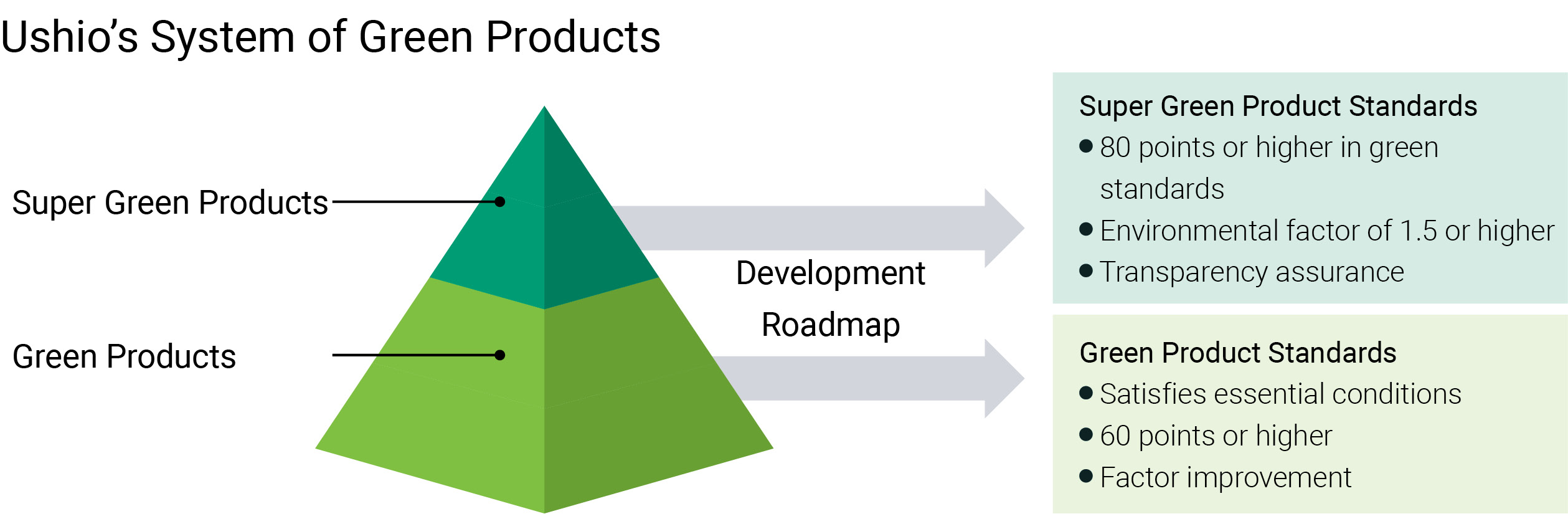
Development of Super Green Products
We are working to create green products and certify products that actively employ innovative environmental technologies as "super green products" in accordance with our own certification criteria. Super green products are front-runner products with excellent environmental performance in terms of energy savings, long-term use, 3R design, materials used, and applications. These products have cleared numerical standards by Ushio Environmental Factor. Currently, many of our products are certified as super green product.
Evaluation Criteria of Super Green Products
The certification standard for Super Green products is comprised of the following three requirements.
1) Green product score of 80 or more (based on green product assessment standards)
2) Environmental factor of 1.5 or more (calculated in comparison to previous products, with FY2015 as the baseline year)
3) Attainment of transparency
Environmental Factor
Environmental factor is calculated by dividing the environmental efficiency of the target product by the environmental efficiency of the equivalent product in the baseline year. Ushio calculates a product's environmental efficiency by dividing product value (performance) by environmental impact. Product value is calculated by multiplying energy output by lifespan. Environmental impact is calculated with this formula: √ [(Energy input)²+(3R volume)²+(Chemical substances content)²]
1. Energy output: For lamps, primarily lighting output and intensity in the necessary wavelength range
2. Energy input: Energy consumed in using the product
3. 3R volume: Product size and weight (quantity of resources used)
4. Chemical substances content: Quantity of substances with environmental risk contained in the product. For example, if the environmental factor is α for a given product, it signifies the following improvements over the baseline year
・A product performance improvement by a factor of α, assuming the product environmental impact is held constant. A product environmental impact reduction by a factor of 1/α, assuming the product performance is held constant
Actions Regarding Green Products
When designing products, Ushio is required to conduct a green product assessment. This assessment of green products includes more than 60 points to be cleared, and we designate products that satisfy such necessary benchmarks, including improvement of environmental factors, as green products.
Life Cycle Assessment Activities
LCA stands for Life Cycle Assessment, a method of quantitatively estimating and evaluating the resources and energy used by a product and its environmental impacts from raw materials procurement to manufacturing, use, recycling, and final disposal. Furthermore, LCA evaluate the potential environmental impact of a product.
Implementing LCA
No matter how much CO₂ emissions are reduced at factories, these activities are not meaningful if CO₂ emissions increase when the manufactured products are actually used by customers. Meanwhile, products can provide both cost and environmental benefits for customers if they use energy-efficient products. Therefore, to quantitatively measure the environmental impact of products and services over the entire lifecycle, Ushio formulated LCA guidelines in 2006 and has implemented LCAs ever since.
Product LCA Information
Used in a broad range of fields, from industrial applications to illumination and business domains, Ushio's products create an environmental load on wide-ranging fronts throughout the entire product lifecycle. We are persisting with efforts to reduce the environmental load for society as a whole by devising various environmentally conscious countermeasures and utilizing numerical values at each stage of the product lifecycle to ascertain an overall profile of the environmental load. In this manner, the Ushio Group is striving to contribute to society through conserving the environment. As part of these efforts, we disclose Life Cycle Assessments (LCA) evaluation results for lamps widely used in offices and households, including discharge lamps and lighting power sources for projectors. The results of these evaluations are utilized for improvements in product design and manufacturing processes as well as for in-house environmental education.
Specific Examples of LCA Initiatives
High-Intensity Discharge Lamp for Data Projectors (NSH Lamp) and Lighting Supply Source

In this case example, Ushio calculated CO₂ emissions for one lamp at each stage of the product lifecycle. We learned that CO₂ emissions during lamp usage account for approximately 98% of total CO₂ emitted during the entire product lifecycle, mainly resulting from electric power consumption. The next largest proportion of CO₂ emissions is from materials used in the lamp, which account for about 1.5% of emissions, mainly the reflector, front glass, and other glass materials. Our assessments thus reveal that CO₂ emissions are particularly large during the usage stage. The development of energy-conserving lamps is therefore crucial as an improvement measure.
Product evaluated: High-intensity discharge lamp for data projectors (Direct current lighting 300W)
Period of usage: 1,500 hours
Product flow: Materials →manufacturing (production plant) → distribution → usage → disposal
CO₂ Emissions by Life Cycle Stage
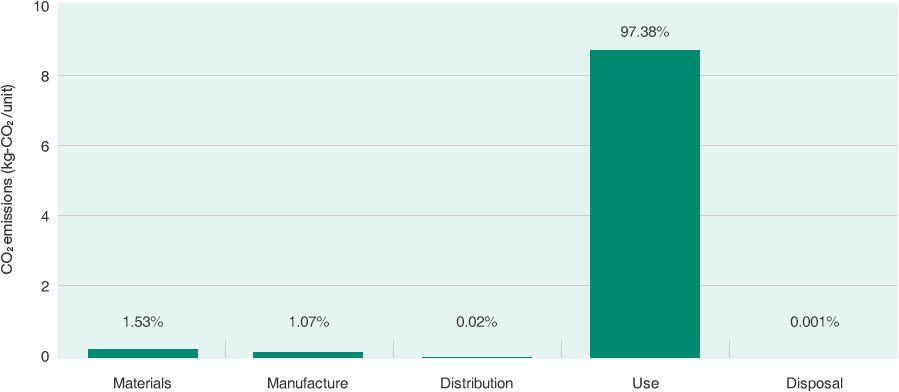
Lighting Power Source for High-Intensity Discharge Lamp for Data Projectors

In this case example, Ushio calculated CO₂ emissions for a lighting power source at each stage of the product lifecycle. We learned that CO₂ emissions occurring at the stage of the materials used in the power source accounted for around 54% of the total CO₂ emitted during the entire product lifecycle. Moreover, these materials were mainly transistors, diodes, and other semiconductor device materials. The stage responsible for the next largest proportion of CO₂ emissions is the stage of usage, which accounts for about 45% of the total emissions, mainly resulting from electricity loss. The electricity loss at this stage of usage is calculated by converting the load loss into CO₂ emissions. Our assessments thus reveal that particularly large CO₂ emissions result from materials used and from the usage stage. Improvement measures include selecting semiconductor elemental devices with a lower environmental load, reducing the number of semiconductor elemental devices that cause large environmental loads by improving power source circuits, and raising the efficiency of lighting power sources by developing energy-saving technologies.
Product evaluated: Lighting power source for high-intensity discharge lamp for data projectors (AC lamp NSHA 230W)
Period of usage: 11,750 hours (3.5 hours per day for 100 days per year over five years: based on the Japan Environmental Management Association for Industry's EcoLeaf Program, Product Specification Criteria (PSC) for data projectors, No. AG-03)
Product flow: Materials →manufacturing (production plant) → distribution → usage → disposal
Volume of CO₂ Emissions at Each Stage of the Product Lifecycle
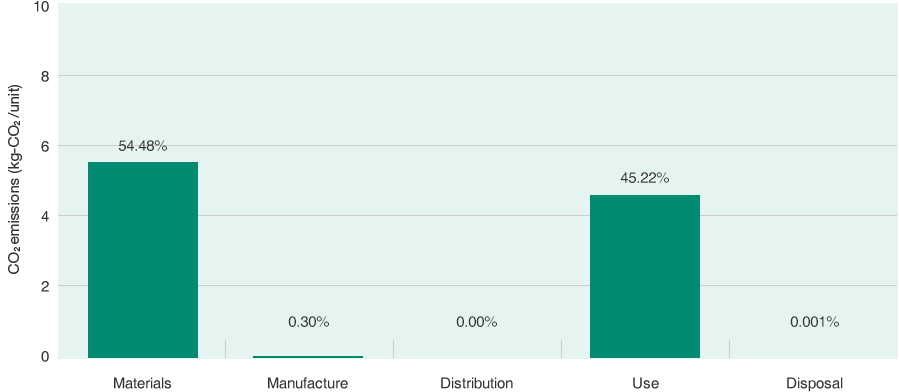
* This power source is manufactured overseas and thus we have excluded the shipping stage.
* For the same reason, we have used values related to production in Japan for CO₂ conversion unit values.


